Terry Smith was born in Miami, Florida, and grew up in Pittsburgh, Pennsylvania, Jacksonville, Florida, Chicago, Illinois, the most remote Appalachian Mountains of North Carolina, and Little Rock, Arkansas.
Smith’s family ancestry goes all the way back to the beginning of America in the early 1600’s because three of his direct ancestors were Pilgrims on the original Mayflower that sailed to America in 1620, and many of his direct ancestors were African American slaves who traveled on slave ships from Africa to America in the 1600’s and 1700’s.
With Smith having such a very large family tree from the very beginning of America for more than the past 400 years, and with him having a family tree that includes direct ancestors from all races, then Smith is related to the very largest number of our Fellow Americans that it is possible to be related to. In fact, it is possible that he is related to more of Our American People than anyone in America.
 Terry Smith graduated from Avery High School and The Asheville School in North Carolina, where he played four sports, football, basketball, wrestling, and baseball, leading his teams as quarterback, point guard, shortstop, and wrestler to Conference championships in three sports.
Terry Smith graduated from Avery High School and The Asheville School in North Carolina, where he played four sports, football, basketball, wrestling, and baseball, leading his teams as quarterback, point guard, shortstop, and wrestler to Conference championships in three sports.
He quarterbacked his football team to the first Conference championship and first State Play-off Game in school history.
He earned first team All-Conference in football, baseball, and wrestling, was twice chosen as Team MVP in football, was chosen Team MVP in baseball, won the basketball Conference championship, and he won the individual Conference wrestling title where he was selected as the most outstanding wrestler in the Conference tournament.
In American Legion baseball in Arkansas for 17- and 18-year-olds, he played shortstop and second base as his Little Rock team won the State championship.
After graduation, Smith attended Cornell University where he was a business management major, and then went on to Furman University where he earned his teaching degree.
He also earned a Graduate Degree in Business from The University of Warwick in England.
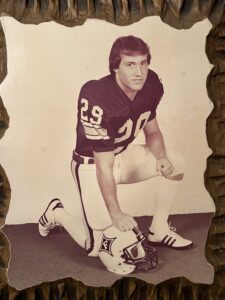 He intended to go to Harvard Law School because he finished one question away from receiving a perfect score on the Law School Admission Test, but he became convinced by parents of the football players he coached that there are other people who can be excellent lawyers, but that very few people can inspire young men to achieve personal greatness in their Lives and on the athletic field like these parents thought Smith could inspire them to do.
He intended to go to Harvard Law School because he finished one question away from receiving a perfect score on the Law School Admission Test, but he became convinced by parents of the football players he coached that there are other people who can be excellent lawyers, but that very few people can inspire young men to achieve personal greatness in their Lives and on the athletic field like these parents thought Smith could inspire them to do.
In college he played three sports, football, baseball, and track, and he is the last three-sport athlete in Furman University history.
He played free safety in football, leading all defensive backs for two seasons with 150 tackles on Furman’s first two outright Southern Conference Championships in school history.
 Smith set Furman records for tackles per game in a career by a defensive back, and for tackles in an individual game by a defensive back.
Smith set Furman records for tackles per game in a career by a defensive back, and for tackles in an individual game by a defensive back.
He was chosen as the State of South Carolina College Defensive Player of the Week for his outstanding performance in a game versus Virginia Military Institute in 1980, and he was also chosen as the Player of the Week for his performances in games versus both The University of North Carolina in 1980 and The University of Florida in 1981.
In the three games combined, Smith totaled 59 tackles, 1 tackle for loss, 3 passes defended, 3 fumbles caused, 1 fumble recovered, and 1 pass interception to seal a victory.
 In baseball he played centerfield, and he was one of the leading hitters in the United States with a .414 batting average in 1982, the 5th highest single season batting average in Furman history.
In baseball he played centerfield, and he was one of the leading hitters in the United States with a .414 batting average in 1982, the 5th highest single season batting average in Furman history.
Smith is still the second-leading career hitter in the 125-year history of Furman baseball, he has the highest career batting average for the past sixty years with a career average of .363, and his achievement of 29 stolen bases in 31 attempts is still a school record.
In track, Smith ran the 100-meter, 200-meter, 400-meter, 4 x 100-meter relay, 4 x 200-meter relay, and 4 x 400-meter relay, winning many gold, silver, and bronze medals.
 He earned All-Southern Conference in two sports, while being chosen Team MVP in baseball, and earning Academic All-Southern Conference and Academic All-Region in every sport.
He earned All-Southern Conference in two sports, while being chosen Team MVP in baseball, and earning Academic All-Southern Conference and Academic All-Region in every sport.
Smith was also nominated as the Furman University Athlete of the Year, and nominated for the Southern Conference Athlete of the Year Award.
After graduation, Smith signed with The New England Patriots, playing in 1982 and 1983.
However, he suffered a major knee injury of the ACL, MCL, and entire cartilage in a game versus the Philadelphia Eagles that required total reconstructive knee surgery, and his knee was so injured that it would not pass the medical physical the following season, which ended his NFL career.
 Smith worked very hard to rehabilitate his knee, and signed with the Spring Football League USFL in 1984, went to Spring Training with the Cincinnati Reds in 1985, and signed a contract with and joined the Miami Marlins professional baseball team.
Smith worked very hard to rehabilitate his knee, and signed with the Spring Football League USFL in 1984, went to Spring Training with the Cincinnati Reds in 1985, and signed a contract with and joined the Miami Marlins professional baseball team.
Smith then began a college football coaching and teaching career in math and as the Director of the Academic Learning Center at Furman University, Newberry College, and Lees-McRae College.
As the Director of the Academic Learning Center he taught and worked with all the athletes from all the men’s and women’s sports, and he taught and worked with all the students across the entire campus.
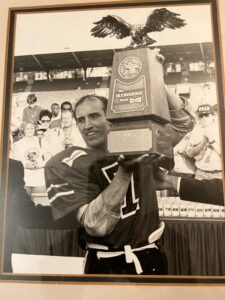 At Lees-McRae College he served as the Defensive Backfield Coach and Defensive Coordinator in both 1984 and 1985, and in 1985 his defense led the nation in run defense by allowing only 1.2 yards per carry for the entire season.
At Lees-McRae College he served as the Defensive Backfield Coach and Defensive Coordinator in both 1984 and 1985, and in 1985 his defense led the nation in run defense by allowing only 1.2 yards per carry for the entire season.
Smith was nationally honored by being chosen in 1984 as the Defensive Backfield Coach for the National Junior College All-Star Game for the South Team, with his South Team winning.
He was further honored nationally by being chosen in 1985 as the Defensive Backfield Coach and the Defensive Coordinator for the National Junior College All-Star Game for the South Team, with his South Team winning by a score of 19-6 as his defense held the North Team to minus 13 yards rushing for the entire game.
 As a football coach at Furman, his team won the Southern Conference Championship, and made it to the Semi-Final of the Division 1-AA National Championship, finishing the season as the #3 ranked team in the United States.
As a football coach at Furman, his team won the Southern Conference Championship, and made it to the Semi-Final of the Division 1-AA National Championship, finishing the season as the #3 ranked team in the United States.
In 1987, Smith taught math, health, and physical fitness, and coached football at the outstanding academic school Hammond Academy in Columbia, South Carolina, helping to lead his team to the South Carolina State Championship Game.
In 1988, he traveled to Great Britain, where in an NFL-backed league he was the league’s only Player/Head Coach, playing wide receiver and free safety and serving as Head Coach for ten seasons.
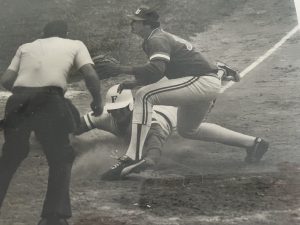 He led the European League in receiving multiple times, achieved several 1,000 yard receiving seasons, and led Europe with the most interceptions in a season.
He led the European League in receiving multiple times, achieved several 1,000 yard receiving seasons, and led Europe with the most interceptions in a season.
He set the All-time League record and All-time National record for interceptions in a season with 12 interceptions in the 1988 season.
He set the All-time League record and all-time National record for pass receptions in a game with 15 pass receptions in one game in 1991.
He set every team and franchise receiving record with most receptions in a game, most yards receiving in a game, most touchdown receptions in a game, most receptions in a season, most yards receiving in a season, most touchdown receptions in a season, most receptions in a career, most yards receiving in a career, and most touchdowns receiving in a career.
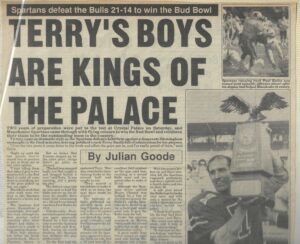 He also set every team and franchise interception record with most interceptions in a game, most interception return yards in a game, most interception return touchdowns in a game, most interceptions in a season, most interception return yards in a season, most interception return touchdowns in a season, most interceptions in a career, most interception return yards in a career, and most interception return touchdowns in a career.
He also set every team and franchise interception record with most interceptions in a game, most interception return yards in a game, most interception return touchdowns in a game, most interceptions in a season, most interception return yards in a season, most interception return touchdowns in a season, most interceptions in a career, most interception return yards in a career, and most interception return touchdowns in a career.
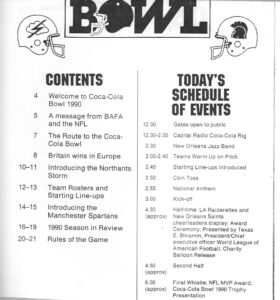 He was chosen to the All-European Team as both a wide receiver and as a free safety on several occasions.
He was chosen to the All-European Team as both a wide receiver and as a free safety on several occasions.
As a European head coach, Smith took over a last place 2-12 Manchester Spartans team, and in his first season led them to the League Championship with an all-time League record, National record, and European record of 14-0 for the season, an all-time League, Great Britain, and European record that still stands today.
In Smith’s first three seasons as Player/Head Coach, during which he coached every position on the field and served as both his own Defensive Coordinator and Offensive Coordinator, he led his team to a 56-2 overall record that included three Division Championships, three Conference Championships, three Regular Season League Championships, two National Championships, and one European Championship which was the first European Championship ever achieved by a British club.
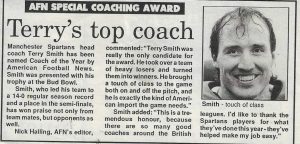 His Spartans team, with Smith as Player/Head Coach, also won the Budweiser Bowl National Championship Game played at Crystal Palace in London in 1989, and his Spartans team won the Coca-Cola Bowl National Championship Game played at Crystal Palace in London in 1990.
His Spartans team, with Smith as Player/Head Coach, also won the Budweiser Bowl National Championship Game played at Crystal Palace in London in 1989, and his Spartans team won the Coca-Cola Bowl National Championship Game played at Crystal Palace in London in 1990.
The National Championship team from every Country in Europe qualifies to compete against each other in the European Championships, and so Smith and his Spartans team entered the European Championships as the National Champion of Great Britain.
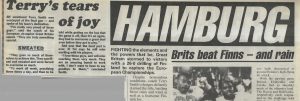 Prior to Smith bringing his Spartans team to the European Championships, no British team in history had ever won a single game in European competition.
Prior to Smith bringing his Spartans team to the European Championships, no British team in history had ever won a single game in European competition.
In the Final 16 Round of the European Championships, Smith’s Spartans team defeated Dublin in Dublin, Ireland.
In the European Quarter-Final, he and his Spartans team defeated Amsterdam in Manchester, England.
In the European Semi-Final, he and his Spartans team defeated Berlin, Germany in Rimini, Italy.
In the European Finals Championship Game, he and his Spartans team defeated Milan, Italy in Rimini, Italy to win Great Britain’s first-ever European Championship.
As a result of his team’s success, Smith was also chosen to be the Great Britain National Team Head Coach, where in the same capacity as an Olympic Team head coach, he traveled through all of England, Scotland, Wales, and Northern Ireland to scout, evaluate, choose, and coach players from across all of Great Britain.
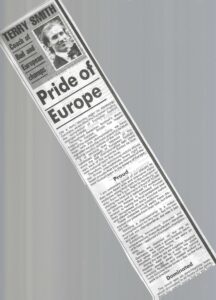 The Great Britain National Team had also never won a single game in Europe in any competition before Smith took over, but in his first year as National Team Head Coach, while again coaching every position on the field and serving as both Defensive Coordinator and Offensive Coordinator, he led the Great Britain National Team to its first-ever European Nations Championship, as his team won all three of their European Play-off and Championship games.
The Great Britain National Team had also never won a single game in Europe in any competition before Smith took over, but in his first year as National Team Head Coach, while again coaching every position on the field and serving as both Defensive Coordinator and Offensive Coordinator, he led the Great Britain National Team to its first-ever European Nations Championship, as his team won all three of their European Play-off and Championship games.
His Great Britain National Team defeated France in the European Quarter-Final 35-6 in Birmingham, England, defeated Germany in the European Semi-Final 38-6 at Volkspark Stadium in Hamburg, Germany, and defeated Finland in the European Finals Championship Game in Hamburg, Germany 26-0, to win Great Britain’s first-ever European Nations Championship by a combined score of 99-12.
 As a result of these achievements, Smith was chosen as the Great Britain National Coach of the Year three years in a row, and he was chosen as the European Coach of the Year two years in a row.
As a result of these achievements, Smith was chosen as the Great Britain National Coach of the Year three years in a row, and he was chosen as the European Coach of the Year two years in a row.
Smith is also the only head coach in European history to win European Championships with both a Professional team and with a National Team, and Smith accomplished this without ever losing a game in Europe.
As a result of this success, Smith was chosen to the Great Britain Hall of Fame, he was chosen to the International Football Hall of Fame, and he was nominated to the Queen for his achievements.
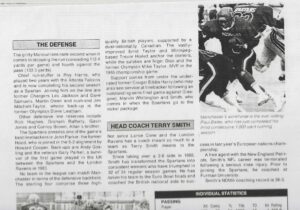 In Europe, Smith defeated many past and future NFL head coaches and college head coaches, winning every match-up against future NFL head coaches by scores of 38-7, 65-0, and 64-0, and winning every match-up against former NFL head coaches, including a 26-0 win in the European Championship Final when Smith was the Great Britain National Team head coach.
In Europe, Smith defeated many past and future NFL head coaches and college head coaches, winning every match-up against future NFL head coaches by scores of 38-7, 65-0, and 64-0, and winning every match-up against former NFL head coaches, including a 26-0 win in the European Championship Final when Smith was the Great Britain National Team head coach.
After each of his five National and European Championships, the NFL league office executives would present Smith with that year’s Championship trophy during the NFL American Bowl games at Wembley Stadium.
He was presented with the trophies on the Wembley Stadium playing field at halftime of the NFL American Bowl in front of more than 100,000 spectators and a worldwide television audience.
For 14 years, Smith worked with the NFL to promote and expand the sport of American Football in Great Britain and in Europe.
During these 14 years, Smith was also the coordinator, organizer, and leader of the nationwide school program in Great Britain where American Football was taught to children in hundreds of schools across Great Britain.
In addition, for these years Smith served as the NFL scout for the New England Patriots and for the New York Jets, and NFL general managers such as Dick Steinberg of the Jets had so much confidence in Smith’s opinion on players that they would sign the European players that Smith recommended to them to NFL contracts, sight-unseen and based solely on Smith’s analysis and opinion.
During these years, Smith was a national columnist for several national newspapers and magazines, including First Down, American Football News, and Gridiron magazine.
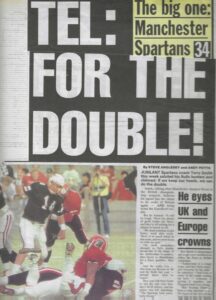 Smith also had regular weekly nationwide radio shows on BBC Radio.
Smith also had regular weekly nationwide radio shows on BBC Radio.
He also served as an American football television studio host for Sky Sports broadcasts of NFL games, which was the ESPN of Great Britain.
Smith wrote a motivational book titled The Hero Inside of You that he designed to help readers to set their goals, create a plan for reaching their goals, and play a game within themselves to score with daily activity actions that allowed them to accomplish their personal self-development and goal achievements. His book, The Hero Inside of You, was published and sold throughout Europe.
Smith wrote a motivational book titled The Hero Inside of You that he designed to help readers to set their goals, create a plan for reaching their goals, and play a game within themselves to score with daily activity actions that allowed them to accomplish their personal self-development and goal achievements. His book, The Hero Inside of You, was published and sold throughout Europe.
Smith also owned several professional sports teams, serving as head coach, general manager, and chief executive officer of each team, including owning and being the general manager and chief executive officer of the European Champion American football team.
He also became the first American in history to own a European professional soccer team.
The Soccer Club he purchased had been in administration for a full year, which is an English form of bankruptcy, until Smith arrived to purchase the Club and take over all of the Club’s debts.
Smith took over as the general manager/chief executive of the Club, doing these jobs for free without being paid to save the Club money.
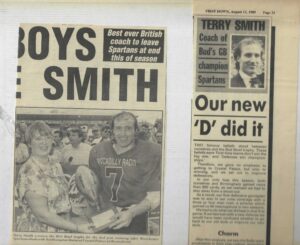 While the Club had been in administration before Smith’s arrival, the administrator had sold almost all of their veteran players to pay the Club’s bills, and so when Smith took over, the Club only had its young players still remaining on the team.
While the Club had been in administration before Smith’s arrival, the administrator had sold almost all of their veteran players to pay the Club’s bills, and so when Smith took over, the Club only had its young players still remaining on the team.
When the head coach/manager resigned after losing the team’s first three League matches without scoring a single goal in any of the games, Smith also took over as the head coach/manager of the team so he could save the Club money since he did not pay himself to do any of these jobs.
In this very difficult financial situation and playing situation for the Club, Smith and his team had great success in the Cup tournaments.
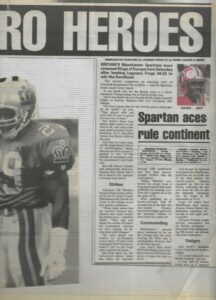 He led his young team to the 3rd Round of the FA Cup in both of his seasons with the Club, even though the Club had historically only reached the 3rd Round of the FA Cup in two of their previous 115 seasons before he arrived.
He led his young team to the 3rd Round of the FA Cup in both of his seasons with the Club, even though the Club had historically only reached the 3rd Round of the FA Cup in two of their previous 115 seasons before he arrived.
In both of his seasons with the Club, his team was only defeated in the FA Cup after losing very close matches to major soccer clubs Manchester City and Blackburn Rovers, and only after his team had played extremely well in both matches with scores of 1-1 and 0-0 with only eleven minutes remaining in each FA Cup match.
His team also made it to the 2nd Round of the Worthington Cup, upsetting the much larger First Division club Port Vale, before only losing 1-0 to Premier League club Aston Villa in a match that was tied 0-0 with ten minutes remaining.
Aston Villa only scored in the final minutes after being awarded a penalty kick on an unusual and inadvertent handball at the top of the box, and Smith’s team even saved the penalty kick before Aston Villa scored on the rebound.
His team also made it to the Semi-Final of the FA Trophy in 2000-2001, which is a National competition that includes hundreds of soccer clubs in all divisions across all of Great Britain.
In addition, his team achieved the Club’s first Cup Championship of any kind in more than 40 years by winning the Nationwide Trophy in 2001.
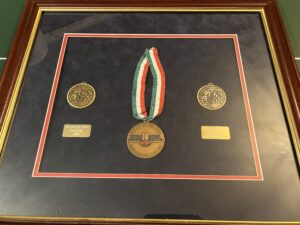 Smith did such an excellent job with his Club’s finances that he paid off all the Club debts within only five months of taking over, getting the Club out of administration two and a half years earlier than required, and getting the Club out of debt for the first time in more than 100 years.
Smith did such an excellent job with his Club’s finances that he paid off all the Club debts within only five months of taking over, getting the Club out of administration two and a half years earlier than required, and getting the Club out of debt for the first time in more than 100 years.
Smith achieved this financial success for the Club because he had reduced costs as much as possible by keeping only young players that had lower salaries, by Smith serving for free as the head coach/manager to save costs, by Smith serving for free as both the general manager and chief executive to save costs, and by his team having excellent Cup tournament success in several Cup tournaments against Premier League clubs that brought in a large amount of additional revenue.
Smith also Believed very strongly in the sport of Women’s Soccer that was just starting in England and Great Britain at this time, and he helped greatly to build the sport of Women’s Soccer in England and in Great Britain.
In his efforts to help to build and develop the sport, his Club had one of the first Women’s Soccer teams in all of England and Great Britain.
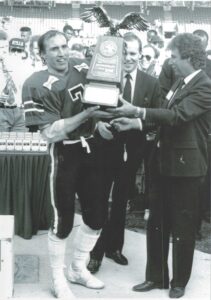 He also had his Club and his Stadium host several major Women’s Cup competitions, including the FA Women’s Premier League Cup Final in 2001 that was won by Arsenal.
He also had his Club and his Stadium host several major Women’s Cup competitions, including the FA Women’s Premier League Cup Final in 2001 that was won by Arsenal.
Smith hosted these Women’s Cup competitions with his Club and at his Stadium for free, and he gave all the revenue and financial proceeds from these matches to the Women’s teams who were playing, and to the Women’s League that was working very hard to grow and develop.
After Smith had gotten his Club entirely out of debt and into a strong financial position for the first time in more than 100 years, he chose to sell the Club, and the Club went on to achieve promotion to a higher division of the Football League during the following season.
Smith is the first American to ever be the owner of a European Soccer Club, the first American to ever be the Chairman of a European Soccer Club, the first American to ever be the General Manager of a European Soccer Club, the first American to ever be the Chief Executive of a European Soccer Club, the first American to ever be the Manager of a European Soccer Club, the first American to ever be the Head Coach of a European Soccer Club, and the first American to ever coach in the FA Cup, which is the largest and most famous soccer competition in the world.
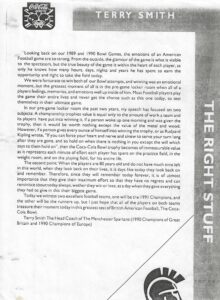 Smith’s American Football and Soccer experiences in Great Britain became the inspiration for the outstanding Ted Lasso television series on Apple TV+, and the positive-thinking and motivational Ted Lasso character is based upon Smith.
Smith’s American Football and Soccer experiences in Great Britain became the inspiration for the outstanding Ted Lasso television series on Apple TV+, and the positive-thinking and motivational Ted Lasso character is based upon Smith.
As stated in the April 2021 edition of Apple Magazine, “The Ted Lasso series was actually inspired by the story of Terry Smith, an American gridiron football coach who took over the English association football team Chester City F.C., and subsequently installed himself as the first-team coach.”
Forbes magazine wrote in March 2022 that Smith was the first American to ever own an English or European Soccer Club, and that Smith was the first American in history to see the opportunity and lead the way for all the current American owners of English and European Clubs.
Forbes magazine also wrote about Smith, “Twenty-three years after the inspiration for the character of Ted Lasso became the first American to own an English football team, Chelsea look set to be the next club to pass into U.S. ownership.”
This inspiration and bond between Smith and Ted Lasso is very extensive and well-documented.
For example, just as Smith was the Head Coach of two teams in Great Britain that won five National Championships and European Championships in the sport of American football, including winning the European Championship as the Head Coach of the Great Britain National Team before Smith began to coach soccer in England, Ted Lasso was the Head Coach of a College National Championship American football team before being hired to coach soccer in England.
Likewise, many of the storylines from the Ted Lasso episodes directly match the actions and experiences that Smith had in his coaching career, all of which were very well-documented in the media by newspapers, magazines, and national television programs that are still available for the Lasso writers and actors to read and watch.
For example, national television documentaries from 1999 show Smith going to visit many elementary schools where he talks with the students, he teaches soccer skills and plays soccer with them, and then he gives each of the children a free ticket to the upcoming matches.
In the same way, in one of the first Ted Lasso episodes in Season 1, Ted Lasso makes a visit to an elementary school and does these same things in the exact order with the children just like Smith did 21 years earlier.
In another matching storyline from Season 1, a Manchester Evening News writer, Paul Hince, wrote a feature article in their national newspaper about Terry Smith in December 1999 after Smith’s team played very well and were barely beaten on a late goal by Manchester City in the FA Cup.
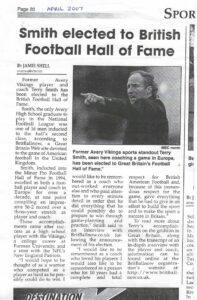 Hince intended to write a negative article about Smith, but during the interview he found that he liked Smith, and so he changed to writing a positive article about Smith.
Hince intended to write a negative article about Smith, but during the interview he found that he liked Smith, and so he changed to writing a positive article about Smith.
Hince wrote in his article that “Terry Smith is charming”, that Smith is very supportive of his players, and in the last sentence of the article wrote that he wants Smith to be successful.
Likewise, in the Ted Lasso series, there is a Season 1 episode where the same kind of feature newspaper article is written about Lasso.
Just as in the December 1999 storyline about Smith, the Ted Lasso newspaper writer intends to write a negative article about Ted Lasso. However, the writer finds that he likes Lasso, just like Paul Hince liked Smith, and so the writer in Ted Lasso writes about how nice Lasso is, how much Lasso supports his players, and writes in the last sentence of the article that he wants Lasso to be successful.
In this same article about Smith in 1999, Hince wrote that during the warm-ups for the Manchester City match that Smith was on the pitch with his players and walked “around like a US Marshall inspecting his defenses before the outlaws hit town”.
And Hince also wrote that, “It was raining cats and dogs. The softie management team from Maine Road (Manchester City) were dressed for an expedition to the North Pole. Not Teflon Terry. He stood on the touchline for the entire 90 minutes wearing a blazer and slacks. Want to bet his forefathers helped tame the Wild West?”
In a matching of this newspaper description of Smith, the writers for Ted Lasso have the Ted Lasso character be a cowboy from the West of the United States.
Even the name Lasso is a western cowboy term for a cowboy rope that matches this newspaper description of Smith, and Ted is as close to Terry as it is possible to get.
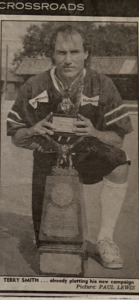 And so, not only does a Ted Lasso episode from Season 1 completely match this 1999 newspaper article storyline about Smith, but even the Ted Lasso name and his western cowboy personality match this 1999 newspaper article about Smith.
And so, not only does a Ted Lasso episode from Season 1 completely match this 1999 newspaper article storyline about Smith, but even the Ted Lasso name and his western cowboy personality match this 1999 newspaper article about Smith.
One of the many other matching storylines in Ted Lasso is that Smith became famous for his design of very detailed soccer set pieces, such as on corner kicks and free kicks.
Smith was the first and only head coach/manager in the English League at that time who put excellent detailed preparation into his team’s set pieces because at that time the coaches in England saw the entire game of soccer as being fluid.
Therefore, the other coaches in England allowed their players to ad lib with whatever the players wanted to do on set pieces during matches.
Many of Smith’s very detailed set piece designs resulted in his team scoring goals in big matches, especially during his team’s many successful Cup runs.
Smith was very often quoted in newspapers that he had a disadvantage compared to soccer coaches who had grown up playing and coaching soccer, but that he had an advantage on set pieces because in American football every play is the same as a designed set piece.
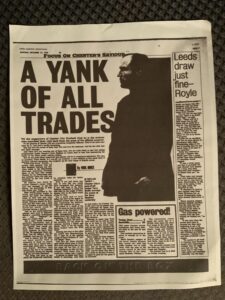 Smith said that he saw the game of soccer differently on set pieces than the experienced English soccer coaches did, and that this gave him the opportunity to take advantage of his American football background.
Smith said that he saw the game of soccer differently on set pieces than the experienced English soccer coaches did, and that this gave him the opportunity to take advantage of his American football background.
Likewise, in the Ted Lasso series, Lasso talks about how soccer set pieces are like American football plays, he frequently focuses on the detailed design of set pieces, and his set piece designs lead to goals for his team in big matches.
Lasso also says exactly what Smith said 21 years earlier, when Lasso says that he has a disadvantage compared to other soccer coaches who have grown up with the game of soccer, but that he has an advantage on set pieces because he sees the game differently with set pieces than the other soccer coaches do.
In speaking about Lasso’s advantage as an American football coach designing soccer set pieces, Lasso and Richmond F.C. Club owner, Rebecca Welton, say that within every disadvantage there is an advantage if you look for it.
This is exactly what Smith had said 21 years before to the media and in newspapers about the disadvantage of his American football background being an advantage for designing soccer set pieces.
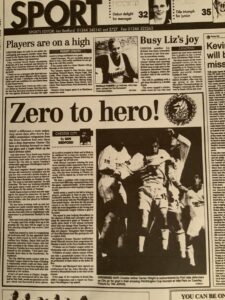 In an AppleTV+ video and Yahoo Movies interview from August 18, 2020, that can be found on uk.movies.yahoo.com, Ted Lasso’s co-founder and writer, Brendan Hunt, who also plays Assistant Coach Beard in the Ted Lasso shows, is asked a question in the video interview about what Ted Lasso would say to motivate the England National Team for the World Cup.
In an AppleTV+ video and Yahoo Movies interview from August 18, 2020, that can be found on uk.movies.yahoo.com, Ted Lasso’s co-founder and writer, Brendan Hunt, who also plays Assistant Coach Beard in the Ted Lasso shows, is asked a question in the video interview about what Ted Lasso would say to motivate the England National Team for the World Cup.
Hunt responds with one answer, “I think he (Ted Lasso) would do what Terry Smith did for Chester City back in the day – He would drape himself in the American flag and he would emphasize the American Dream because that is what I think English people love the most.”
Hunt took this American flag reference about Smith from a 1999 Four Four Two magazine that had a feature article written about Smith, where the magazine had the article’s cover story photo be a picture of Smith standing on the stadium field with an American flag draped around him.
The magazine editor had brought the flag to the stadium for Smith to drape around him in the picture.
This 1999 Four Four Two magazine article about Smith being draped in the American flag was from 21 years before Brendan Hunt referred to Smith in the Apple TV+ interview in 2020.
And this Four Four Two magazine from 21 years earlier is not available anywhere online.
Therefore, Brendan Hunt’s reference to this 1999 magazine article about Smith that is not available anywhere online showed many things. Some of these are:
- How knowledgeable the writers and actors of Ted Lasso were about Smith when they talk about Smith off the top of their head in a one question interview about Ted Lasso motivating the England Team.
- How much Smith was at the forefront of the writers and actors’ minds when the only answer they gave to an interview question refers to Smith, especially when the interview question was about Lasso saying something to motivate the England National Team for the World Cup and so could have had millions of possible answers to it.
- But writer and actor Brendan Hunt chose to talk about Terry Smith instead of giving any of the other millions of possible answers.
- This fact shows how much Smith was at the forefront of the Lasso writers’ and actors’ minds, and how important Smith was to them.
- This importance shows how prominent Smith was in the writing of Ted Lasso.
- How hard the writers and actors of Ted Lasso had worked to research Smith that allowed them to find an article in a hard copy of a 21-year-old magazine that is not available online.
Ted Lasso’s famous BELIEVE poster also matches what Smith did because Smith taped papers and motivational items on the dressing room wall that had the word BELIEVE on them, Smith wrote BELIEVE on the front page and on the last page of every Game Plan book that he wrote and gave to his players for every match, Smith wrote BELIEVE on the front page and on the last page of every Scouting Report book he wrote and gave to his players for every match, Smith wrote BELIEVE on every Daily Journal entry that he wrote about the Club and about his personal Life every Day for all those years, including on the day he purchased the Club, including on the day he took over as head coach/manager of the team, and including on the day he coached his first match as the head coach/manager in a very important Cup win.
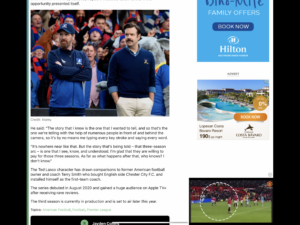 Smith also wrote BELIEVE on the front page and throughout the motivational book he wrote that was published the year before he purchased the soccer club, and Smith always spoke to his players and to the media about Believing and getting people to BELIEVE.
Smith also wrote BELIEVE on the front page and throughout the motivational book he wrote that was published the year before he purchased the soccer club, and Smith always spoke to his players and to the media about Believing and getting people to BELIEVE.
In fact, when Smith took over the team, an article in the Guardian national newspaper in August 1999 quoted Smith as saying, “Getting to the First Division in three years is not a promise, Smith says, it’s a goal. There’s not much difference between being a Third and a First Division team. In every area of Life you pretty much become what you BELIEVE you can become. And if I have to stand up and say we’ll be in the First Division in three years and get people to BELIEVE that, then to me that’s what has to be done.”
Smith stated this quote about BELIEVE right after taking over the Club in 1999, and Ted Lasso also taped the BELIEVE poster onto the dressing room wall in the first episode of the Ted Lasso series right after he took over as head coach of the team.
Therefore, Ted Lasso began Smith’s BELIEVE philosophy right at the very beginning in the first episode of the Ted Lasso series, just as Smith had displayed his BELIEVE philosophy right at the very beginning of his ownership and coaching of the Club and Team.
Throughout the entire Ted Lasso series, there are more than 50 actions and storylines that match what Smith had done, including having the personality of Ted Lasso match with the completely positive-thinking and motivational behavior that Smith had always displayed 21 years earlier and throughout his entire playing and coaching career.
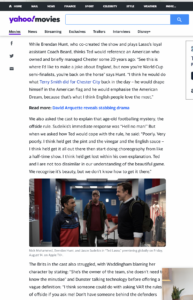 Ted Lasso was nominated for 61 Emmy awards in 2021, 2022, and 2023, including Most Outstanding Comedy Series, Most Outstanding Lead Actor, Most Outstanding Cast, Most Outstanding Supporting Actresses, Most Outstanding Supporting Actors, Most Outstanding Guest Actresses, and Most Outstanding Guest Actors, winning 13 Emmy awards in total.
Ted Lasso was nominated for 61 Emmy awards in 2021, 2022, and 2023, including Most Outstanding Comedy Series, Most Outstanding Lead Actor, Most Outstanding Cast, Most Outstanding Supporting Actresses, Most Outstanding Supporting Actors, Most Outstanding Guest Actresses, and Most Outstanding Guest Actors, winning 13 Emmy awards in total.
Smith returned to the United States, where he spent 18 months as a teacher, head football coach, and head baseball coach at his old high school in North Carolina, giving back to the school he had attended as a student, and giving back to the community and families he had grown up with.
In his first baseball season, he led his team to the most wins in the 50-year history of the school, winning more games than the team had won in its previous eight years combined.
His baseball team set the all-time school record for team batting average, with the team’s combined batting average improving from .190 in the year before he came, to .388 in his first season.
His team also set the all-time school record for home runs, with the team’s home run production improving from only 1 home run in the season before his arrival, to hitting 23 home runs in his first season.
In his first football season at the school, he took over a team that had not had a winning season in many years, and that had only three returning players on the entire roster because nearly the entire team from the year before had been seniors and graduated. Likewise, the Junior Varsity team had only won two games the year before.
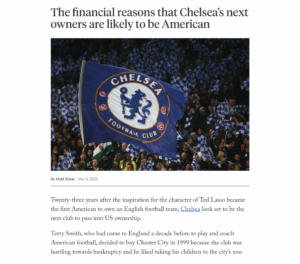 To create a roster, he recruited players to the team from students around the school who had never played football before, and from students who had played years before but had given up the game, resulting in Smith putting together a team with such inexperience that at the start of the year his team did not have a single player who had carried the football or caught a pass in a varsity football game.
To create a roster, he recruited players to the team from students around the school who had never played football before, and from students who had played years before but had given up the game, resulting in Smith putting together a team with such inexperience that at the start of the year his team did not have a single player who had carried the football or caught a pass in a varsity football game.
Despite this total rebuilding challenge, Smith led his team to the school’s best-ever record in the Conference alignment, winning eight games including the final six games in a row, leading his team to the State Play-offs, and setting all-time school passing and total offense records.
In the process of this rebuilding effort, he developed ten players who went on to play in college, three of whom became stars for their college teams.
In the 50+ year history of the school, Smith is still both Avery High School football’s all-time career coaching leader in winning percentage, and Avery High School baseball’s all-time career coaching leader in winning percentage.
Smith resigned to become an offensive coach at NFL Europe training camps, working with NFL quarterbacks and receivers in their preparation for the NFL Europe season.
Smith entered the sport of indoor arena football, where he financially rescued the Carolina team after it had ceased operations and closed mid-season. He saved the players from losing their jobs so they could continue their professional careers, completely rebuilt the Club from scratch, and the revived and rejuvenated team went on to reach the play-offs in its first season and reach the national semi-final game in its second season.
Smith wrote the movie screenplay he titled, “America’s Greatest President”. The reason he wrote his screenplay is because he was concerned about America getting involved in wars with other countries, and he was passionate about providing the moral, ethical, and principled actions that Our President and Our Country can take that will bring Worldwide Peace.
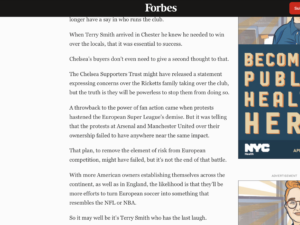 Smith had a heartfelt and positive-thinking moral message to create Worldwide Peace that he was very passionate about.
Smith had a heartfelt and positive-thinking moral message to create Worldwide Peace that he was very passionate about.
He wanted to communicate his moral and ethical message to Our President, to Our American People, and to Our World, in the hopes that this message would help to bring Our World together in Peace, and he felt like the best way to communicate this moral message was through him telling a story in movie form.
He poured his heart into the movie, writing 287 pages in total about the U.S. Presidency and foreign relations that included his moral and ethical message, along with very significant amounts of educational information, historical facts, geographical details, and multiethnic and multireligious knowledge.
Smith then purchased the Mountain Television Network television station, where he built the station from being broadcast on only one cable network and in only two counties of North Carolina, to being broadcast on 16 cable networks and reaching more than two million viewers across six states in the Southeast.
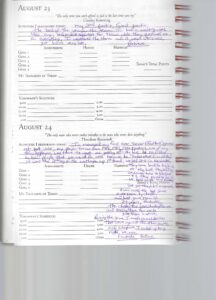 The history and details of the Mountain Television Network can be read on its Wikipedia page.
The history and details of the Mountain Television Network can be read on its Wikipedia page.
At the Mountain Television Network, Smith was the on-air host for more than 1,000 television programs, and he also announced more than 500 athletic contests as the play-by-play or color announcer in football, basketball, soccer, baseball, softball, volleyball, and lacrosse.
He was the color announcer on television broadcasts of Appalachian State University football and basketball games, Mars Hill University football games, Furman University football games, and all the college sports broadcasts in the Conference Carolinas.
One of his proudest achievements was his creation of the Veteran’s Voice television program, where Smith produced and co-hosted more than 350 two-hour interview shows of World War II veterans, Korean War veterans, Vietnam War veterans, and Desert Storm veterans.
Smith created this series of 350 Veteran’s Voice shows over a period of eight years.
More than 300 of these shows were interviews and life stories about World War II veterans because Smith wanted to bring honor to our World War II veterans and heroes, and because Smith wanted to show his great respect and appreciation for our “America’s Greatest Generation” heroes by honoring them for all they had done for America.

He co-hosted these programs with Ken Wiley, the World War II hero who had driven the LCVP landing boats onto the beaches during seven D-Day invasions in the Pacific.
Smith often included additional co-hosts, such as World War II heroes HC Moretz, Norman Isenhour, and Sam Wotherspoon, and the outstanding national World War II historian Keith Buchanan, to serve as co-hosts with Smith and Wiley for many of the television shows.
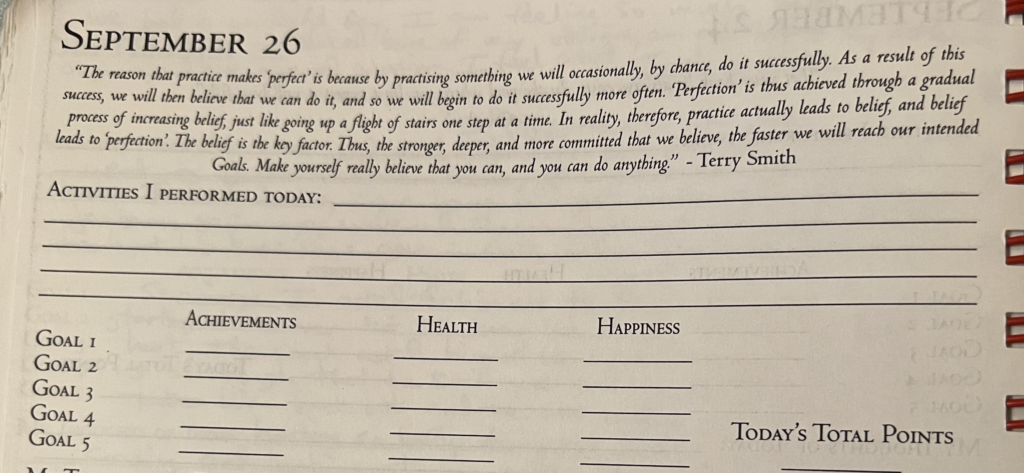 Each of the 350 interviews, and 300 World War II interviews, lasted for at least two hours, as Smith and Wiley interviewed every World War II veteran, telling the life story of each American hero, from their days growing up with their families, through all their incredible World War II experiences, and on to their families and careers during the present day.
Each of the 350 interviews, and 300 World War II interviews, lasted for at least two hours, as Smith and Wiley interviewed every World War II veteran, telling the life story of each American hero, from their days growing up with their families, through all their incredible World War II experiences, and on to their families and careers during the present day.
In addition to televising their life stories, Smith and Wiley produced many DVD copies of the television shows for every veteran.
Smith and Wiley gave a DVD copy to every veteran’s wife, and a DVD copy to each of the veteran’s sons, daughters, grandchildren, and great-grandchildren, thereby ensuring that every family member of every veteran 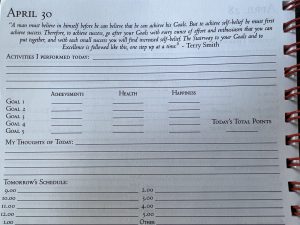 will forever have his or her own copy of the personally told life story of their American hero who they Love.
will forever have his or her own copy of the personally told life story of their American hero who they Love.
As a result of these eight years of commitment to our American heroes, Smith and Wiley put together the largest collection of World War II history through personally told veteran interviews that has ever been produced anywhere in the world, and DVD copies of these interviews are kept as very valuable historical archives in American museums and libraries throughout the United States.
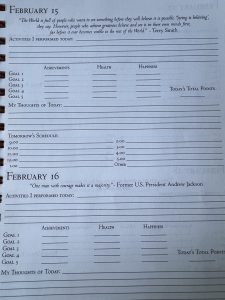 Smith had purchased the Mountain Television Network when it was getting ready to go out of business because the previous owners were preparing to close the station and network.
Smith had purchased the Mountain Television Network when it was getting ready to go out of business because the previous owners were preparing to close the station and network.
Therefore, Smith was able to purchase the station for only a $10,000 deposit.
However, as a result of Smith working 365 days every year, and working 12-18 hours every day, his station grew to produce more original television programming than any television station in America, focusing on sports programming, game broadcasts, programming to honor military veterans, business shows, morning shows, newscasts, programs to honor senior citizens, and programs that benefited viewers such as driving courses to teach teenagers how to drive cars and keep our children safe.
He even partnered with ESPN to be their outlet for game broadcasts in the North Carolina region.
Smith implemented a rule from the very beginning that all his station’s television shows, including all their newscasts, could only have positive stories in them. Negative stories and negative news were not allowed to be covered or shown in any programs.
Smith has always BELIEVED that You Create Your World By What You Think About, and because he wanted to Create A Positive World for his viewers and for his television station, then he made it a station rule that even the newscasts were not allowed to cover negative news of any kind.
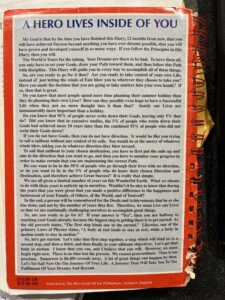 In their newscasts, Smith further promoted his positive thinking by creating a special section of every nightly newscast that told an especially positive story while playing Louis Armstrong singing the song “What A Wonderful World”.
In their newscasts, Smith further promoted his positive thinking by creating a special section of every nightly newscast that told an especially positive story while playing Louis Armstrong singing the song “What A Wonderful World”.
With his television station producing more of their own television programming than any station in America, with Smith expanding the station’s broadcast reach to the six-state and two million viewer growth that he was able to achieve with the station, and after Smith had discovered a very unique broadcast antenna that allowed him to adjust the power of the over-the-air broadcast signal in every direction degree by degree throughout the 360 degrees, redesigning the broadcast antenna tower so that the station’s broadcast signal covered a far larger geographical area, then his station became a very important media outlet for six states across the Southeast of the United States.
Smith became an executive producer of family-written movies in Hollywood.
Smith filmed and directed the Tim and Jan Southern Fresh cooking show in the mountains of North Carolina that emphasized the eating of very nutritional food taken directly from the garden to the kitchen and then to the dining room table.
A very popular television cooking show filmed and directed by Smith that was broadcast to more than 100 million homes and 200 million people across America for three years.
Smith filmed, directed, and edited the movie, Horn In The West, which is a fantastic story of American Patriotism that includes the Revolutionary War, Daniel Boone, and the Overmountain Men who marched over the highest Appalachian mountains from Sycamore Shoals in present-day Tennessee to Kings Mountain, South Carolina, to fight and win the Battle of Kings Mountain in October of 1780 that was the turning point of the Revolutionary War for our American Patriots.
Thomas Jefferson, writer of the Declaration of Independence and future President, referred to this amazing effort and winning battle by our American Patriots as “The turn of the tide of success for America” in the Revolutionary War.
President Theodore Roosevelt also later said, “Therefore, this brilliant victory marked the turning point of the American Revolution.”
Smith filmed and directed this Revolutionary War movie so he could tell this incredible story of American Patriotism and Courage to a nationwide and worldwide audience.
Smith became a full-time Business School professor at Lees-McRae College, where he taught eight courses every semester in the School of Business and Management, including Financial courses, Leadership courses, Marketing courses, Management courses, Journalism courses, Coaching courses, General Manager courses, and Business Communications courses.
Smith was promoted to become the head of two departments at the same time, the Sport Management Department and the Health and Fitness Department, both of which were in the School of Business and Management.
In this role, he created and wrote all the courses, and redesigned the entire curricula for both Departments.
In addition, he designed and wrote the curricula to redesign the Sport Management major, and he designed and wrote the curricula to create three new Sport Management Minors, including the Coaching Minor.
Smith was also elevated to serve as the Faculty Athletic Representative, where he led and developed the educational relationship between the entire athletic department and the faculty.
In this role, he oversaw the education of every athlete on all the men’s and women’s sports teams in the college.
As the Faculty Athletic Representative, he reported directly to the President, and served in the President’s cabinet.
Smith also created a college television department, where his students learned to film, edit, produce, and broadcast television programs and college game broadcasts on cable and internet television throughout the region.
Large numbers of Smith’s students have gone on to become very successful athletes, coaches, athletic directors, professional sport general managers, and professional sport team owners.
One of these outstanding students, Nathan Watt, an exceptional award-winning soccer player and coach who came to Lees-McRae College from England, has written the following about Smith:
“Terry Smith quickly became not just a favorite teacher of mine, but a mentor and guide for my career aspirations.
As someone who struggles with confidence in sport and life in moments, Terry constantly instilled in me confidence, along with a newfound self-belief that I could achieve any of my life goals.
Throughout this mentorship period, I was constantly challenged to deliver high quality work and push myself to the very limit.
Ever since our paths crossed, Terry has been one of my biggest advocates in life and still to this day is constantly reminding me to seek the highest of goals.
Never in my wildest dreams would I ever have envisioned that even though I graduated from Terry’s class over seven years ago, that we would remain in contact to this day and is the only teacher to continue to go out of his way to do so.
This is simply testament to the character he showcased during his time as my teacher; he always went above and beyond and still delivers!
Over the years I developed a wealth of knowledge from Terry, but most importantly about the need to remain humble, determined and hungry for success.
As a full-time coach and youth director, I constantly utilize many of the life skills he helped instill in me, and for that I am forever grateful.”
This sure sounds a whole lot like the positives that we see in Ted Lasso.
When Smith resigned because he wanted to move to take care of his father, who Smith is very close to and who was struggling at the time, his students held a banquet for him where one-by-one they came up to give emotional and tear-filled speeches thanking Smith for how much he had meant to them, and thanking Smith for how much he had changed their Lives in so many positive ways.
Smith was crying also because of the very close bond and the deep Love that he had for all his students. He thanked his students for all they had given to him through the years, saying in his speech to his students that they gave more to him than he had given to them.
After Smith’s father recovered his health, Smith became an academic director at Elizabethton High School, reporting directly to the school system’s superintendent and school board.
Smith took over a brand-new Bartleby program that had only 22 students in it when he arrived, and he creatively designed a schoolwide plan that was a win-win situation for everyone involved so that within only five months he was able to build and grow the program from the 22 students he began with to include all 900 students in the entire high school.
Through maximum personal commitment to his work every day, he formed win-win relationships with everyone involved, including Business Partnerships with more than 150 area businesses, Partnerships with the Mayor and Council, and College Partnerships with all the region’s colleges and universities.
The area businesses and government offices hired his students to jobs, and colleges and universities were so impressed with his educational program that Smith was able to negotiate College Partnerships with all of the region’s colleges and universities that included tuition scholarships for every one of his students who completed a combination of courses in his educational program.
In addition, with innovative educational techniques and goals, Smith helped to produce 50 new project-based and experiential learning-based high school courses, many of which he personally designed and wrote the curricula for.
The success of his educational program allowed him to expand his program throughout the entire high school so that every student in the school was taking several courses that Smith had designed.
As a result of this success, his Elizabethton High School was chosen as one of America’s Top 10 XQ Super Schools in the entire United States, a National Honor which the school continues to hold to this day.
After Smith had built and expanded his program, Smith then raised several million dollars in national funding for Elizabethton High School.
After obtaining this funding, Smith had control over how the funding would be used.
He chose to utilize it to train all teachers throughout the entire school system in project-based teaching methods, to provide bonus compensation to teachers for their teaching of the new project-based courses, to purchase a large amount of technology equipment for the students and teachers, and to redesign seven educational areas of the high school that included the building of a Presentation Auditorium with two giant power projector screens, a career-technology Makerspace, a Virtual Reality lab with virtual and augmented reality equipment and 3D printers, a Television Studio with cameras and broadcast equipment, a Collaboration work area, an Outdoor classroom, and a Theater with a stage for the music and drama departments.
Smith designed courses that developed students in all aspects of their Life success, including public speaking, career web portfolios, community improvement projects, entrepreneurship projects, high school preparation for ninth graders, and senior capstone courses taught by college partnership professors that prepared his students for college and career success.
Smith personally taught daily in several of the classes, and he personally taught public speaking in all the courses.
As a result, his students became such accomplished speakers that they were invited to speak at national educational conferences across the United States.
 The tremendous educational success achieved by Smith’s program and high school led to Smith being chosen by the United States Congress as one of only four public school leaders in the entire United States to be invited to Washington, D.C. in July of 2018, where Smith spoke to Congress on Capitol Hill about the innovative success that his school had achieved.
The tremendous educational success achieved by Smith’s program and high school led to Smith being chosen by the United States Congress as one of only four public school leaders in the entire United States to be invited to Washington, D.C. in July of 2018, where Smith spoke to Congress on Capitol Hill about the innovative success that his school had achieved.
In addition, Smith was asked to provide advice to Congress on how to accomplish the desired Future Path and Goals for Education in America.
During all these years in America, Smith also coached youth teams in football and baseball as an unpaid volunteer for 25 seasons, including coaching football and baseball teams for all of his children.
Just as Ted Lasso did in the final show of the three-year series when Lasso returned home to the United States and coached his young son in youth soccer.
After resigning from the high school in 2019 because he wanted to move to take care of his parents, Smith managed a thoroughbred racehorse farm that became the most successful horse farm in the Eastern United States because amazingly three triple crown race champions have been raised and trained on the farm.
Including Tiz The Law, who in 2020 won the Belmont Stakes, finished second in the Kentucky Derby, won the Travers Stakes, and won the Florida Derby.
Including Medina Spirit, who in 2021 won the Kentucky Derby, finished third in the Preakness Stakes, won the Shared Belief Stakes, won the Awesome Again Stakes, and finished second in the World Championship Breeder’s Cup Classic.
Since 2022, Smith has been based in Washington DC, where from 2022 through 2024 he greatly enjoyed serving as the president of the tremendous nonprofit NFL Alumni Association Chapter in Washington DC.
He chose to be in Washington DC because he thought this would allow him the greatest
opportunity to help as many people, children, and families as he possibly can in the Washington DC area, and because by being in Washington then he would also be able to help as many people, children, and families as possible across the entire United States because of all the federal agencies and national charities that are based in Washington.
In this role, Smith volunteered all his time to help charities and nonprofits throughout the Washington DC region, including by raising money for the fantastic U.S. Marines Toys For Tots national office based in Quantico, by speaking at the Toys For Tots National Convention, by working with Toys For Tots to help with their nationwide Christmas toy drive and book literacy program where every year they incredibly provide 25 million toys, books, and games to 10 million underprivileged children and foster children across the United States, by working with and raising money for former NFL players who have faced physical challenges, by raising money for the many amazing children’s charities that are within the exceptional NFL Alumni Association Caring For Kids program, by working with the outstanding Playmakers non-profit organization that helps children across the entire United States who have physical challenges, by working with Gallaudet University, America’s premier university for hearing-impaired students that continues to lead our nation and our world, by working to benefit the students and athletes at our illustrious and motivating Historically Black Colleges and Universities, by working with outstanding foster children and foster children organizations in Washington DC, Virginia, and Georgia, by working to expand the nationwide membership and charitable reach of the phenomenal nonprofit NFL Alumni Association, by developing a nationwide sports memorabilia auction that benefits Toys For Tots and the NFL Alumni’s Caring For Kids charities, by fully supporting the sport of American football for Women and for the sensational Women’s Professional Football Alliance League, which is the NFL of the Women’s Game, by initiating and designing with Rich Daniel, the inspirational and trailblazing owner of the three-time national champion D.C. Divas Women’s Professional Football Team in Washington DC, with the marvelous and radiant WFA Commissioner Lisa King, and with the extraordinary NFL alumni CEO Brad Edwards the working Partnership between the Women’s Professional Football Alliance and the NFL Alumni Association at their WFA Championship Games broadcast on ESPN in the NFL Hall of Fame Stadium in Canton, Ohio, as well as by working together with Rich Daniel, Lisa King, and Brad Edwards to initiate and design the National Partnership and very close working relationship between the Women’s Football Alliance and the NFL Alumni Association.
Through Smith’s contribution to Women’s Professional Football in this way, just as Smith played an important role in helping the Sport of Women’s Soccer and the Sport of Women’s Football to begin and develop in England, Great Britain, and Europe, he has also helped the Sport of Women’s Football to begin and develop in America. As a result, he is the only person in the World who has helped to support these growing, beautiful, and very successful Women’s Sports on both sides of the Atlantic.

